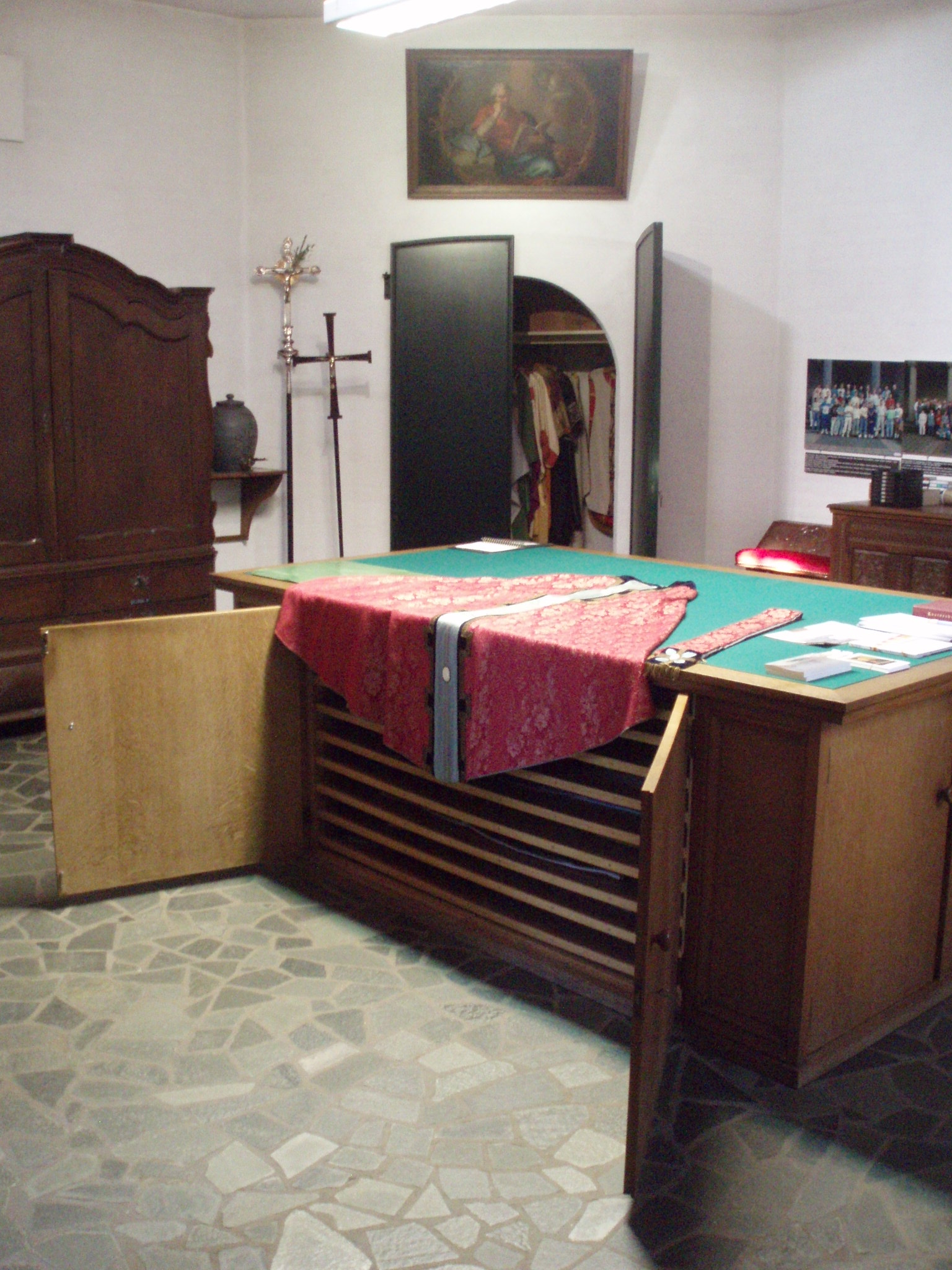Doctrine
What is a Sacristy in the Catholic Church : History, Purpose, Significance.
Within the sacred walls of a Catholic church, hidden away from the prying eyes of the congregation, lies a place of profound significance: the sacristy. As an essential part of the church, the sacristy serves as the backstage of the liturgy, housing sacred vestments, vessels, and other items necessary for the celebration of the Eucharist. In this article, we will embark on a journey to explore the depths of the sacristy, unraveling its purpose, history, and significance within the Catholic Church.
Defining the Sacristy:
The sacristy, derived from the Latin word “sacrarium” meaning “a place for sacred things,” is a designated room or area located within a Catholic church, often adjoining the sanctuary or the presbytery. It serves as a sanctuary for the sacred vessels, liturgical vestments, books, and other objects used in the celebration of the Mass and other liturgical rites.
Historical Background:
The origins of the sacristy can be traced back to the early centuries of Christianity. In the early Church, the sacristy was a simple storage area where the sacred vessels and liturgical books were kept. However, as the liturgy developed and became more intricate, the need for a dedicated space to prepare for the sacred rituals arose.
By the Middle Ages, sacristies had evolved into elaborately decorated rooms, reflecting the importance of the liturgy in the life of the Church. These spaces often featured ornate cabinets, vestment closets, lavatories, and even small chapels for the clergy to pray before and after the celebration of the Mass.
Purpose and Functions:
The sacristy serves several essential functions within the Catholic Church:
- Preparation of Liturgical Celebrations: The sacristy is where the priest, deacons, and other ministers prepare for the celebration of the Mass and other liturgical rites. Here, they vest in the appropriate liturgical garments, such as the alb, stole, chasuble, and dalmatic, signifying their sacred roles.
- Storage of Liturgical Items: The sacristy houses sacred vessels, such as the chalice, ciborium, and paten, as well as liturgical books, such as the Roman Missal and the Lectionary. These items are carefully stored and maintained within the sacristy to ensure their reverence and integrity.
- Vestment Care and Maintenance: The sacristy is responsible for the care, cleaning, and repair of liturgical vestments. These garments, used by the clergy during the celebration of the Mass, are often ornate and symbolically significant, requiring proper upkeep and reverence.
- Liturgical Coordination: The sacristy serves as a hub for liturgical coordination. It is where the priest or liturgical coordinator prepares the necessary liturgical books, coordinates the ministers’ roles, and ensures all liturgical items are in order for the celebration.
- Private Prayer and Preparation: The sacristy also offers a space for private prayer and preparation for the clergy. It allows them to gather their thoughts, seek spiritual solace, and mentally prepare themselves for the sacred responsibilities they are about to undertake.
Significance and Symbolism:
The sacristy holds great symbolic significance within the Catholic Church. It is considered a sacred space, separate from the main body of the church, where the clergy can prepare themselves spiritually and mentally to lead the faithful in worship.
Moreover, the sacristy represents a gateway between the secular and the sacred, the mundane and the divine. It is in this space that ordinary objects, such as bread and wine, are transformed into the Body and Blood of Christ, and where the faithful are invited to encounter the transcendent through the celebration of the sacraments.
The sacristy also embodies the notion of order and reverence. It serves as a place of organization, where liturgical items are meticulously arranged and cared for, reflecting the Church’s commitment to the beauty and dignity of worship. Additionally, the sacristy’s architectural design and decor often reflect the grandeur and sacredness of the Church, emphasizing its role as a sanctuary for the divine.
Furthermore, the sacristy fosters a sense of continuity and tradition. Throughout the centuries, the sacred vessels and vestments stored within its walls have been used in countless celebrations, connecting the present generation of clergy with their predecessors. It serves as a tangible link to the rich history and heritage of the Catholic Church.
Conclusion:
The sacristy, a hidden treasure within the Catholic Church, plays a crucial role in the celebration of the liturgy. As a space dedicated to preparation, reverence, and spiritual nourishment, it serves as a vital backstage for the clergy, ensuring the seamless and reverent execution of the sacred rites.
In the sacristy, the ordinary is transformed into the extraordinary, and the faithful are invited to encounter the divine mysteries. It is a sanctuary for the sacred vessels, vestments, and liturgical books, embodying the Church’s commitment to beauty, tradition, and the sanctity of worship.
While often hidden from the eyes of the congregation, the sacristy remains a sacred heart within the Catholic Church—a place where the clergy find solace, the liturgy is meticulously prepared, and the faithful’s encounter with God is facilitated. It stands as a testament to the enduring traditions and deep spirituality that define Catholic worship, inviting all to appreciate and reverence the beauty of the liturgy and the mysteries it unveils.
About Author





























